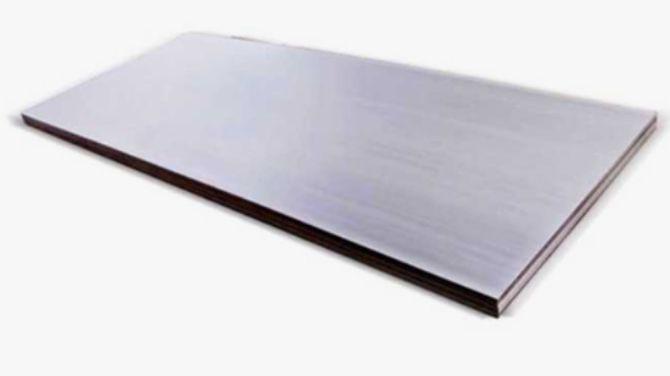Aluminium sheets are flat-rolled metal products known for their versatility, strength, and lightweight nature. From industrial construction to household appliances, aluminium sheets play a vital role across numerous applications. This blog covers everything you need to know about aluminium sheets—their properties, types, applications, and why they are widely used in today’s industries.
What Is an Aluminium Sheet?
An aluminium sheet is a flat piece of aluminium metal that is less than 6mm thick. It’s made by passing aluminium ingots through high-pressure rollers. This process results in thin, flat pieces of metal that are easy to work with and shape.
Aluminium sheets come in a variety of thicknesses, widths, and grades. The sheets can also be customized for specific applications such as roofing, cladding, insulation, signage, and more.
Properties of Aluminium Sheet
Aluminium sheets offer a wide range of properties that make them useful in several industries:
-
Lightweight: Aluminium is about one-third the weight of steel, making sheets easy to transport and install.
-
Corrosion Resistance: The natural oxide layer protects aluminium from rust and corrosion.
-
High Strength: Certain aluminium alloys offer excellent tensile strength.
-
Non-Magnetic: This makes it useful in electronics and sensitive machinery.
-
Excellent Conductivity: Aluminium conducts both heat and electricity well.
-
Malleable and Ductile: It can be easily bent, formed, or cut into various shapes.
Types of Aluminium Sheets
There are different types of aluminium sheets, each suited for specific uses:
1. Plain Aluminium Sheet
This is a smooth, flat sheet with no texture or pattern. It is used in general fabrication, signboards, and architectural applications.
2. Chequered Aluminium Sheet
Also known as tread plate or diamond plate, this sheet has a raised pattern for added grip. It’s commonly used in flooring, stairs, and vehicle bodies.
3. Anodized Aluminium Sheet
These sheets are treated through anodization, making them more durable and corrosion-resistant. They are used in decorative and architectural elements.
4. Brushed Aluminium Sheet
These have a brushed finish and are often used for aesthetic applications, such as appliance panels or signage.
5. Perforated Aluminium Sheet
Perforated sheets have holes or slots punched into them for filtration, soundproofing, or aesthetic purposes.
Aluminium Sheet Grades
Different aluminium grades serve different purposes. Common aluminium sheet grades include:
-
1100: Commercially pure aluminium, highly corrosion-resistant, soft, and workable.
-
3003: A widely used alloy that offers a balance between strength and corrosion resistance.
-
5052: High strength and excellent corrosion resistance, ideal for marine and industrial use.
-
6061: One of the most versatile and strong aluminium alloys used in structural applications.
-
8011: Common in packaging and household applications like foil.
Common Applications of Aluminium Sheet
Aluminium sheets are used in a wide array of industries and sectors:
1. Construction
Used in roofing, cladding, facades, and structural elements because of their durability and lightweight.
2. Automotive and Transportation
Found in car bodies, trailers, fuel tanks, and airplane components. Its low weight helps improve fuel efficiency.
3. Electrical
Used for panels, enclosures, and conductors due to its good electrical conductivity.
4. Packaging
Aluminium sheet is used for making cans, foil wraps, and food containers. It is non-toxic and recyclable.
5. Household Appliances
Found in refrigerators, microwave ovens, and washing machines because of its smooth finish and corrosion resistance.
6. Signage and Advertising
Aluminium is easy to print on and is weather-resistant, making it perfect for outdoor signs.
Advantages of Using Aluminium Sheets
Using aluminium sheet provides numerous benefits over other materials:
-
Eco-Friendly: Aluminium is 100% recyclable without any loss in quality.
-
Cost-Effective: Despite its high-quality properties, aluminium is relatively affordable.
-
Durability: Aluminium sheets are long-lasting and can withstand harsh environments.
-
Aesthetic Appeal: It offers a clean, modern appearance, suitable for decorative purposes.
-
Low Maintenance: Aluminium requires little to no maintenance due to its rust-resistant properties.
How Aluminium Sheets Are Made
The production process of aluminium sheets involves several steps:
-
Mining and Refining: Aluminium is extracted from bauxite ore.
-
Smelting: The ore is refined into pure aluminium using electrolysis.
-
Casting: The molten aluminium is cast into large slabs.
-
Rolling: These slabs are then rolled into thin sheets of various thicknesses.
-
Finishing: Sheets are cut, cleaned, and sometimes treated with anodizing or coating.
This process ensures that the sheets have a uniform thickness, excellent finish, and desired mechanical properties.
How to Choose the Right Aluminium Sheet
When selecting aluminium sheets for your project, consider the following factors:
-
Thickness: Depending on the application, choose from thin foil-like sheets to thick plates.
-
Grade: Match the grade to your requirement—whether it’s corrosion resistance, strength, or formability.
-
Finish: Decide between plain, anodized, or patterned finish based on aesthetic or functional needs.
-
Size: Consider the dimensions available or whether custom sizing is needed.
Maintenance Tips for Aluminium Sheets
To maintain aluminium sheets and prolong their lifespan:
-
Clean regularly using mild soap and water to remove dirt and grease.
-
Avoid harsh chemicals that may damage the surface or finish.
-
Use protective coatings in outdoor or marine environments for extra protection.
Final Thoughts
Aluminium sheets are an essential part of modern industry. Their lightweight, durable, and corrosion-resistant nature makes them ideal for countless applications. Whether you're working in construction, transportation, packaging, or household goods, aluminium sheets provide a versatile and cost-effective solution.



